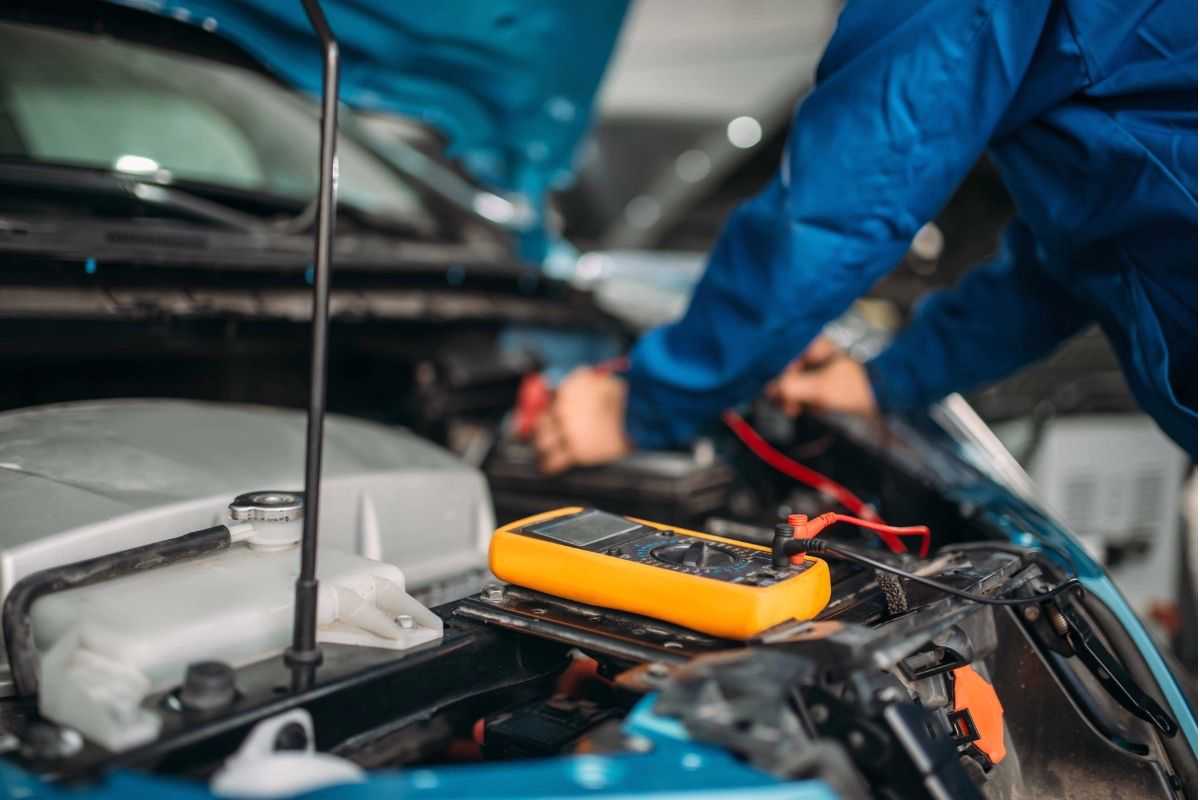Akü Bakımı
Otomobillerde, aydınlatma sistemlerinde, mobil araçlarda, hafif ve ağır ticari araçlarda kullanılan aküler, kullanıldığı alanda ihtiyaç duyulan enerjiyi üretir. Mekanizmaların çalışması aküye bağlıdır. Yüksek performans sağlaması açısından ise akülere belirli periyotlarda bakımlarının yapılması gerekir. Akü bakımı en az doğru akü kullanımı kadar önemli bir konudur.
Akü Bakımı Nasıl Yapılır?
Akü mekanizmaları kimi araçlarda gün içerisinde oldukça fazla efor sarfedebilir. Dur-kalk işlemlerinin çok olduğu şehiriçi kullanımlarında ister normal ister start stop teknolojili aküler olsun, şarj ve deşarj işlemi defalarca tekrarlanabilir. Motorun ihtiyaç duyduğu gücü sorunsuz bir şekilde sağlayan aküler de bir süre sonra bakım isteyecek bir duruma gelebilir. Bu durumlar ise akü başlarını oksitlenmesi, akünün mekanizmaya tam oturması ve azalan enerjisine takviye yapılmasıdır. Akünün bakımında neye dikkat edilir sorusunu da bu etkenler dahilinde farklı şekilde cevaplayabiliriz. Oksitlenme veya kalan enerjinin belirlenmesi açısından akü ister açık ister kapalı olsun, rutin olarak kontrolü sağlanmalıdır. Eğer kutup başlarında oksitlenme varsa önerilen uygulamalarla temizlenir, sarsılmaya neden olacak kadar yerinden de oynadıysa düzeltilir, kablo bağlantılarının sağlamlığı ve saf su ihtiyacı kontrol edilir.Akü Türlerine Göre Nasıl Bakım Yapılmalıdır?
Akülerde de farklı kullanım alanlarına göre çeşitli modeller bulunur. Bakım olarak da akü çeşitlerine göre bir yöntem belirlenebilir. Start stop teknolojisine sahip araçlarda kullanılan EFB akü bakımı, sulu aküler için uygulanması gereken işlemlere gerek duyar. Start stop ve diğer araç tiplerinde de tercih edilen AGM akü bakımı ise kuru aküler için gerekli işlemlere tabi tutulur. Ayrıca her markada düzenekler de farklı olabileceğinden bakım işlemlerinde de farklı işlemler olabilir. Esan Akü bakımı da akü çeşidine göre farklı olur. Ancak kalan akü enerjisinin belirlenmesi noktasında GGGYMV kodlarıyla bilgi verir. Eğer akünüzün üretim tarihini öğrenmek ve buna göre kalan kullanım süresini hesaplamak isterseniz Esan Akü modellerinde negatif kutup bölgelerindeki belirtilen kod ile bir belirleme yapabilirsiniz. GGG üretim günü, Y üretim yılını, M montaj numarası ve V vardiya numarası hakkında bilgi verir. Açık Aküye Uygun Bakım Yöntemleri: Açık akü olarak belirtilen aküler sulu akü kategorisindeki akülerdir. Açık akü bakımı için en önemli nokta ise mekanizmada elektrolit seviyesinin düzenli aralıklarla kontrol edilmesidir. Akü plakalarını aşmamalıdırlar. Akü sıvısı azaldıysa takviye içerisinde mutlaka saf suya da yer verilmelidir. Kapalı Aküye Uygun Bakım Yöntemleri: Kapalı aküler kuru aküler kategorisini kapsar. Çok bakıma gerek duyulmaz .Jel aküler de bu kategoride yer alır. Kapalı akü bakımı işlemlerinde sıvı eklemesi gibi işlemler yapılamayacağından dolayı sadece akünün voltaj düzeyinin 12,4’ün altına düşmemesini sağlamaktır. Düzenli aralıklarla kontrol edilmesi gerekir.Sulu Akü Bakımı Nasıl Yapılır?
Sulu aküler kurşun asit akülerdendir. Bu yüzden de kurşun asit akü bakımı için gereken işlemlere ihtiyaç duyar. Genel bakım gerektirmeyen türleri olsa da bakım lazım olan modellerinde saf su ile elektrolit seviyesi düzenli olarak kontrol edilmelidir. Eğer bu seviye azaldıysa maksimum kapasitesinin üstünde takviye yapılmamalıdır. Ve bu takviye sırasında da belirlenen ölçekte saf su da eklenmelidir. Sulu akü bakımı içerisinde gereğinden fazla su takviyesi de olursa akü sızıntısı yaşanabilir.Kuru Akü Bakımı Nasıl Yapılır?
Kapalı akü sistemi içerisinde yer alan kuru akülerde bakım olarak çok fazla bir işlem yapılamayabilir. Sadece voltaj değerinin 12,4 V altına düşmemesi kuru aküler için çok önemlidir. kuru akü bakımı için gerekli olan işlemler aynı zamanda jel akü bakımı veya AGM akü bakımlarında da gerekir.Akü Bakımında Dikkat Edilmesi Gerekenler
Akünün elektrolit seviyesi Elektrolit seviyesi düzenli olarak kontrol edilmelidir. Sulu aküler içerisinde yer akü tiplerinde elektrolit takviyesi gerekir saf su ile birlikte bir takviye gerekir. Akünün elektrolit seviyesi plakaların neresinde olmalıdır çok iyi bilinmesi gereken bir noktadır. Takviyede maksimum ve minimum çizgileri arasında yer alacak şekilde elektrolit takviyesi yapılır. Saf su eklenmesi Elektrolit seviyesi düşen sulu akülerde saf su takviyesi de gerekebilir. Aküye saf su nasıl eklenir kısmında belirlenen oran üzerinde takviye yapılmaması gerekir. Seviye miktarını gösteren gösterge üzerinden bunun takibi yapılmalıdır. Asit katmanlaşması Elektrolit seviyesi yüzde 80 altında olursa deşarj olması durumun asit katmanlaşması yaşanabilir. Bunun yaşanmaması adına 6 aylık aralarla elektrolit seviyesi kontrol edilmelidir. Şarj testi Akü belirli bir sıcaklık aralığında çok daha iyi performans sergiler. Bunun aksi durumlarda akü ömrü azalabilir, şarj işlemlerinde de istenen verim alınamaz. Bu yüzden belirli aralıklarda aküye yapılacak şarj testi akü ömrü için gerekli önlemlerin de alınmasını sağlar. Akü temizliği Akü başları kimi zaman sora oksitlenme yapabilir. Bu durum akünün düzgün çalışması açısından sorun yaratabilir. Ayrıca akü yüzeyinde metal gibi parçaların temas etmemesi de gerekir. Parçaların teması engellenip, oksitlenme yapan yerler az bir karbonat kullanılan su ile diş fırçası yardımıyla temizlenmelidir. Kablo bağlantıları ve akü düzeneğinin kontrolü Araç aksamlarının en doğru şekilde çalışması adına akü kablo bağlantılarının doğru ve sağlam olarak bağlanması gerekir. Aynı şekilde akünün de kendi düzeneği içerisinde düzgün konumlandırılması akü ve araç arızalarını önlenmesi açısından gerekir. Düzenli olarak yapılan bakımlar kablo ve akü düzeneği de kontrol edilmelidir. Aracı düzenli aralıklarla çalıştırmak Özellikle kış mevsimlerinde araçlar belirli bir süre çalıştırılmayabilir. Ancak bu akü ömrü açısından yararlı değildir. Aracın 2-3 günde bir 15 dakika çalıştırılması akünün kullanım ömrünü belirler.Tavsiye İçerik : Ani Sıcaklık Değişimlerinde Akü Nasıl Etkilenir?
Kışın akü bakımı nasıl yapılır?
Kış aylarında çoğu kişi iş veya okul gibi yerlere toplu ulaşımı kullanarak gider. Bu süre içerisinde kullanılmayan otomobillerin aküleri, kullanım ömrü ve çalışma performansı olarak düşebilir. Bunun önüne geçebilmek adına kışın akü bakımı konusunda alınması gereken ekstra önlemler vardır;- Araçlarınızı mutlaka 2-3 günde bir de olsa 15’er dakika çalıştırın.
- Oksitlenme olup olmadığını kontrol edin. Sıcak su dökerek bunu ortadan kaldırabilirsiniz.
- Kablo bağlantılarını kontrol edin. Kablo başlarını ve akü yüzeyini temizleyin.
- Akü elektrolit ve saf su seviyesini kontrol edin. Azalmış durumda ise gerekli miktarda eklemesini yapın.
- Kuru akülerde voltaj değerini kontrol edin.
- Şarj dinamosu, marş motoru gibi aksamları kış mevsimi öncesinde kontrol ettirin.
- Motor yağı ve yağ filtrelerini de yıllık olarak kontrol edin.

